Istanbul (historically also known as Byzantium and Constantinople) is the largest city in Turkey and fifth largest city proper in the world with a population of anywhere between 15 – 18 million.Istanbul is also a megacity, as well as the cultural, economic, and financial center of Turkey. It is located on the Bosphorus Strait and encompasses the natural harbour known as the Golden Horn, in the northwest of the country. It extends both on the European (Thrace) and on the Asian (Anatolia) sides of the Bosphorus, and is thereby the only metropolis in the world that is situated on two continents.
In its long history, Istanbul has served as the capital city of the Roman Empire (330–395), the Eastern Roman (Byzantine) Empire (395–1204 and 1261–1453), the Latin Empire (1204–1261), and the Ottoman Empire (1453–1922). The city was chosen as joint European Capital of Culture for 2010. The historic areas of Istanbul were added to the UNESCO World Heritage List in 1985.
Istanbul in the night
Beyoglu and Meyhanes (Day #1 )
The Air France flight from Paris to Istanbul was uneventful except for the unpalatable food served. As we landed, we were welcomed with a long immigration queue which took a good one and a half hours. Finally, we came out and sped towards our hotel Miapera in Taksim, Beyoğlu.
It took us one hour because of the evening traffic, but it is typically half an hour from the Airport to Beyoglu.
We were relieved and happy to see the hotel, our room and the facilities (sauna, spa etc.). Highly recommended !!
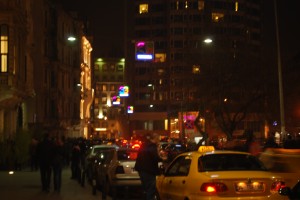

While we liked the Hotel, we loved the location i.e. Beyoğlu is the most active art, entertainment and night life centre of Istanbul. In short, a happening part of town. Right next to Istiklal Caddesi , a 3 km pedestrian street, laced with exquisite boutiques, music stores, bookstores, art galleries, cinemas, theaters, libraries, cafés, pubs, night clubs with live music, historical patisseries, chocolateries and restaurants. It was a weekend and with difficulty we found a Meyhane for dinner. (its advisable to book the place before going).
Some of the good Meyhanes in Beyoglu are Sofyali 9, Galatea, Buncok.
And awesome places for Turkish cuisine are Hamdi Steak House (Eminonu) and Haci Baba (Istiklal Caddesi).
Sultan Ahmet : Blue Mosque, Aya Sofia and Topkapi Palace (Day #2 )
Sultan Ahmet is in the old part of Istanbul. The square was known as Hippodrome of Constantinople during the olden days and was the centre of the city (Constantinople). Today, the Hippodrome has disappeared but it still has obelisks from Egypt and the magnificent Sultan Ahmet Mosque or popularly known as the Blue Mosque for the blue tiles adorning its interiors. There are more than 20,000 such tile hand made at Iznik. In addition to that , there are 200 stained glass windows along with the huge low hung chandelier with just enough light to view the beautiful mosque.
The mosque was built between 1609 and 1616, during the rule of Ahmed I, to match the splendor of Aya Sofia ( built initially as a Church in the 6th century AD). Incidentally, Pope Benedict XVI visited the Blue Mosque in 2006 and paused for a full two minutes, eyes closed in prayer, standing side-by-side with Mustafa Çağrıcı, the Mufti of Istanbul and Emrullah Hatipoğlu, the Imam of the Blue Mosque.
Please ensure that you are dressed appropriately and have covered your head (for women) to enter the mosque.
Hagia Sofia or Aya Sofia is a former Orthodox patriarchal basilica ( initiated by the Byzantine Emperor Justinian) , later converted into a mosque (by the Ottoman ruler Sultan Mehmed II in 1453), now a museum. Famous for its massive dome, it is the epitome of Byzantine Architecture. It was the largest cathedral and the seat of the Patriarch of Constantinople and the religious focal point of the Eastern Orthodox Church for nearly one thousand years. While it was converted into a mosque, many frescoes depicting Jesus Christ were not vandalized or damaged as Christ was revered as a prophet in the Holy Koran.
Topkapi palace was the official residence of the Ottoman Sultans for almost 400 years from 1465 to 1856. The palace is a complex made up of four main courtyards and many smaller buildings. The palace, now a museum houses treasures of the empire – 80 carat diamond, a jewel studded throne (brought from raids in India by Nadir Shah) and more. The palace is also a major tourist attraction as it houses holy relics such as Prohet Muhammed’s cloak and sword, St. John’s hand and skull, Moses’ rod.
After, a sumptuous lunch at Konyali Restaurant at Topkapi, next to the scenic Bosphorus river, we were taken by our guide to Pottery and Carpet & Kilim stores. While we were shown the art how they are made along with cups of apple tea, but the demonstration was smoothly followed by aggressive sales pitch. We somehow managed to squirm out of the place with buying anything.
Grand Bazaar, Spice Bazaar and the Bosphorus Cruise (Day #3)
Grand Bazaar is closed on Sundays, so we missed out yesterday. And so we decided to recce the Grand Bazaar today, before heading for the Bosphorus Cruise and Spice Bazaar later in the day.
The Grand Bazaar (Turkish: Kapalıçarşı, meaning Covered Bazaar) in Istanbul is one of the largest and oldest covered markets in the world, with more than 58 covered streets and over 1,200 shops which attract between 250,000 and 400,000 visitors daily. Opened in 1461, it is well known for its jewelry, pottery, spice, and carpet shops. Its a beautiful market for the photographers and for souvenir hunters. However, one has to be prepared for the aggressive shopkeepers and bargain hard for the wares. Carpets and pottery might not be authentic in this place.
We took the Tramway back to the hotel, just in time to be picked up for the Spice Bazaar tour.
The Spice Bazaar, (Turkish: ‘Mısır Çarşısı’, or Egyptian Bazaar) in Istanbul, Turkey is one of the oldest bazaars in the city. Located in Eminönü, it is the second largest covered shopping complex after the Grand Bazaar. Istanbul or Constantinople was the final destination of the ancient silk route, which used to carry spices from various countries like India, Persia etc. The bazaar has all the spices from around the world. Needless to say, bargaining is a must here as well.
The Bosphorus, also known as the Istanbul Strait , is a strait that forms part of the boundary between Europe and Asia. It is one of the Turkish Straits, along with the Dardanelles. The world’s narrowest strait used for international navigation, it connects the Black Sea with the Sea of Marmara (which is connected by the Dardanelles to the Aegean Sea, and thereby to the Mediterranean Sea). Bous is cow in ancient Greek and poros is the crossing place, so Bosphorus is the place where the cow crossed.
Legend has it that the river was form as part of the great flood 4000 years back (of Noah’s Ark fame). Incidentally, as I write this post, the Ark has been supposedly discovered in mountain of Ararat, Eastern Turkey.
The cruise was marred by rain and the visibility was bad. However, we were able to see both sides of Istanbul i.e. Asian and European.
Later in the evening we went to Hodga Pasha culture center to watch the Sema (performance) by the Whirling Dervishes . The whirling dance or Sufi whirling that is proverbially associated with Dervishes, is the practice of the Mevlevi Order in Turkey. The sema accompanied by sufi music was tranquil and serene. Please note that this is a religious ceremony , wherein the adherents believe they are attaining a higher union with God, therefore, do not talk, take photos or leave your seat during the performance.
Basilica Cistern, Sultan Ahmet and the streets of Istanbul (Day # 8, 9)
We came back to Istanbul after touring the countryside and decided to roam around on our own without the help of any guides. Since we had figured out the Tramway, we took off to Sultan Ahmet.
The Basilica Cistern is the largest of several hundred ancient cisterns that lie beneath the city of Istanbul (formerly Constantinople), Turkey. The cistern, located 500 feet (150 m) west of the Hagia Sophia on the historical peninsula of Sarayburnu, was built in the 6th century during the reign of Byzantine Emperor Justinian I. The cistern’s water was provided from the Belgrade Woods—which lie 19 kilometres (12 mi) north of the city—via aqueducts. It is an architectural marvel. One of the highlights are the two Medusa heads which form the base of pillars. While one is not sure of why they are kept there, one could speculate that these would have been bought from elsewhere (maybe Greece) to be used to build the cistern.
The lunch followed next, at the panoramic Four Seasons hotel, which was a jail in olden days. We were late for the Istanbul Archaeological Museum, so instead we walked inside the beautiful Gulhane Park and had coffee next to the Bosphorus.


The next day, was the Easter Sunday and with difficulty we found a Church (Greek Orthodox) near Istiklal Caddesi in the morning. It was a beautiful Church.
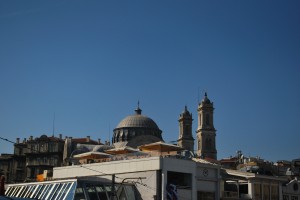
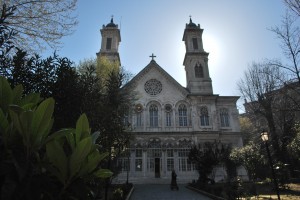
Finally, we checked out of our hotel, Taksim Gonen (highly recommended) and headed to the airport to fly back to Paris.



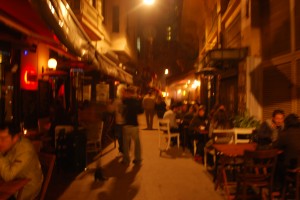




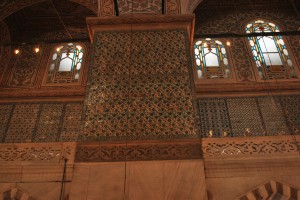
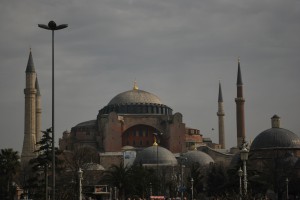

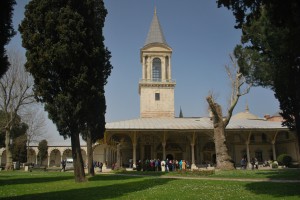













 Follow
Follow

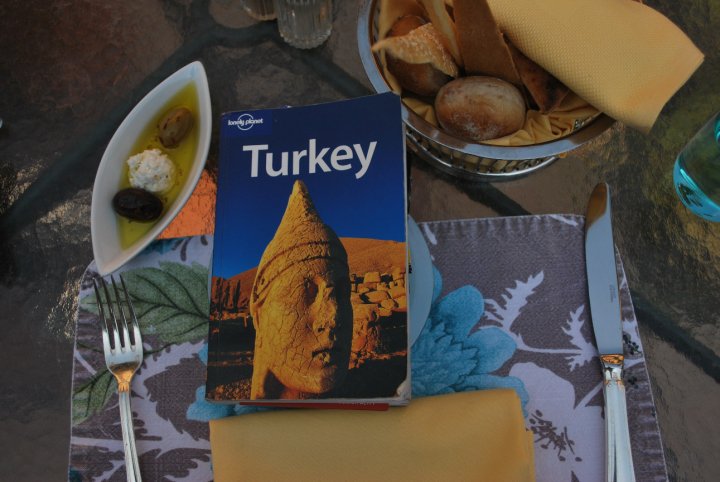



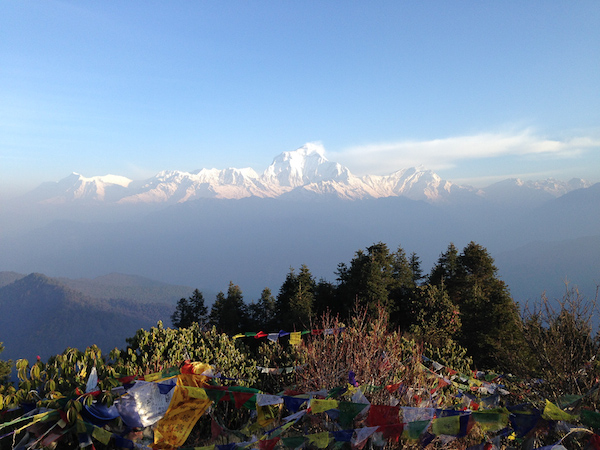




Mehmet
Great article, for more info about this marvelous city, visit; http://www.best-of-istanbul.com